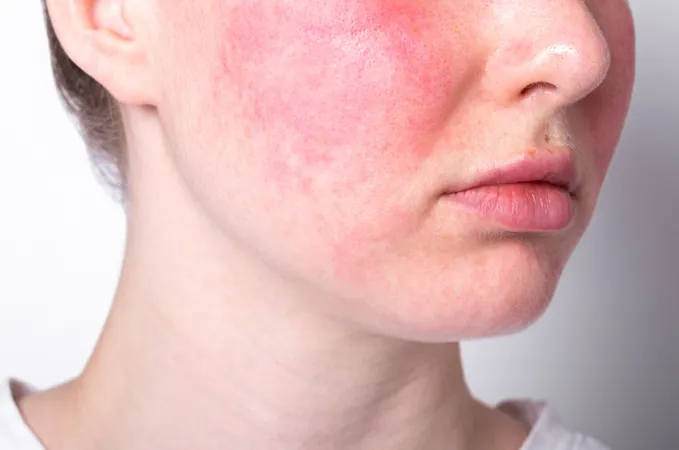
Revolutionary Kesty Redness Scale: A Game-Changer in Facial Erythema Assessment!
2025-04-08
Author: Jia
A groundbreaking study has unveiled the remarkable clinical effectiveness of the Kesty Redness Scale (KRS) for evaluating facial erythema, marking a significant advancement in dermatological practice and aesthetic treatments!
Published in the Journal of Cosmetic Dermatology, this comprehensive research highlights the KRS's inter-rater reliability and its applicability in both aesthetic and generalized dermatology contexts. Unlike previous grading systems that often focus on specific skin conditions such as rosacea and acne, the KRS provides a standardized tool for objectively measuring facial redness before and after treatments—a game changer for practitioners who have long awaited such a resource.
Background and Methodology
Currently, clinicians face a challenge—a lack of user-friendly tools to objectively track changes in skin redness. The authors, led by Kesty et al., identified this gap and embarked on creating the KRS, a 5-point ordinal scale that quantifies redness ranging from clear skin to severe, obscuring erythema.
In this pivotal study, the researchers recruited 10 professionals, including board-certified dermatologists and plastic surgeons, to evaluate over 100 facial photographs. Each rater was equipped with a written guide and reference images matching the KRS grades and tasked with scoring a separate set of 20 unlabeled photos. Not only did they assess the scale’s usability, but they also shared their insights on integrating it into routine clinical practice.
Key Findings
The results were nothing short of impressive! The KRS showcased excellent inter-rater reliability, indicated by Gwet’s AC2 value of approximately 0.92, signifying a high degree of concordance among raters and minimal discrepancies in interpreting the severity of redness.
Further strengthening the KRS's credibility were Kendall’s W coefficient and Spearman’s rank correlation coefficients, both of which demonstrated strong consistency and high agreement levels—often exceeding 0.90—between the new scale and expert judgment. This not only showcases the KRS's reliability but highlights its potential to streamline the evaluation processes in dermatology.
Moreover, the Bland-Altman analysis confirmed minimal bias, with narrow limits of agreement, suggesting that the KRS provides a very accurate assessment compared to traditional expert evaluations. Encouragingly, all evaluators found the KRS intuitive and practical, with unanimous feedback on its ease of use and willingness to incorporate it seamlessly into their daily routines.
Conclusion and Future Directions
Kesty et al. emphasize, 'The KRS is a reliable, user-friendly instrument that elevates the evaluation of facial redness in dermatology.' Its robust validation through statistical analysis and expert agreement paves the way for enhanced clinical practices and better patient outcomes.
Looking to the future, the researchers express interest in utilizing artificial intelligence to teach computers these rating scales, potentially decreasing the reliance on human evaluators, thereby revolutionizing the field even further!
This innovation is expected to transform not only clinical assessments but also research methodologies, making the Kesty Redness Scale a must-know tool for all professionals in the domain of dermatology and aesthetics! Stay tuned as this scale takes the industry by storm!


 Brasil (PT)
Brasil (PT)
 Canada (EN)
Canada (EN)
 Chile (ES)
Chile (ES)
 Česko (CS)
Česko (CS)
 대한민국 (KO)
대한민국 (KO)
 España (ES)
España (ES)
 France (FR)
France (FR)
 Hong Kong (EN)
Hong Kong (EN)
 Italia (IT)
Italia (IT)
 日本 (JA)
日本 (JA)
 Magyarország (HU)
Magyarország (HU)
 Norge (NO)
Norge (NO)
 Polska (PL)
Polska (PL)
 Schweiz (DE)
Schweiz (DE)
 Singapore (EN)
Singapore (EN)
 Sverige (SV)
Sverige (SV)
 Suomi (FI)
Suomi (FI)
 Türkiye (TR)
Türkiye (TR)
 الإمارات العربية المتحدة (AR)
الإمارات العربية المتحدة (AR)